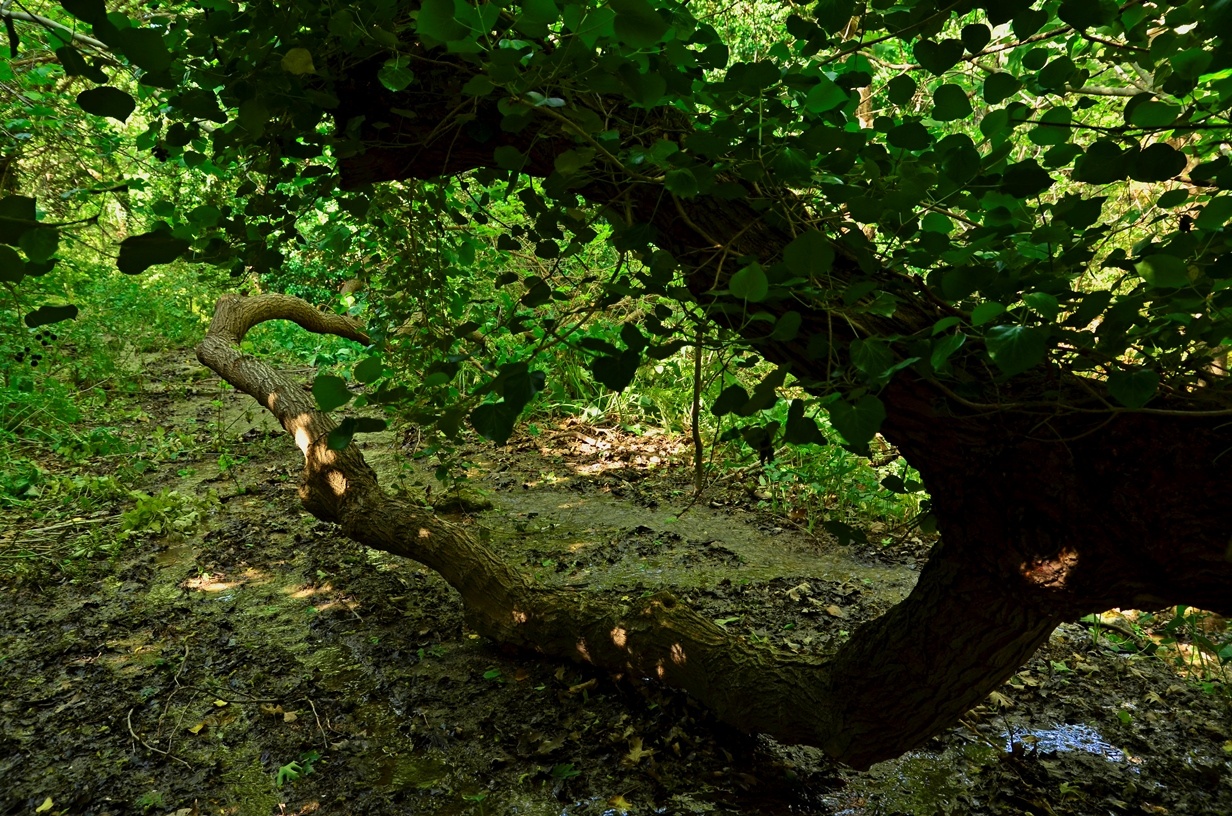
Nearest hamlets: Agios Vasileios, Houdetsi
Distance: 2.4km (including the way back)
Duration: 50 minutes
Entrance / exit coordinates: 35° 11.810'N / 25° 11.281'E (Agios Vasileios)
Entrance / exit coordinates: 35° 11.662'N / 25° 10.861'E (Houdetsi)
Trail type: Well-trodden trail with markers and partially facilitated access
Difficulty: Easy
Recommended season: Year-round (be careful on rainy days)
Amenities: Taverns, cafés and accommodation can be found at Agios Vasileios, Houdetsi and Peza. Travellers can camp in the Old Primary School building of Agios Vasileios, following arrangement with the Cultural Association / In Agios Vasileios; excellent quality home-made local products are on sale at the Women’s Cooperative.
The slopes and beds of gorges have always been connecting routes leading to hamlets or destinations when there were no road networks. Spiliotissa Gorge is a classic example of an access route from Agios Vasilios to Houdetsi and back. Not so much from the bed of the gorge, which is difficult to access due to the wild vegetation, but along an old path that had been carved approximately along the middle of the western slope of the gorge, ending at Spiliotissa [Madonna of the Cave] Convent. At present, the trail that has been opened runs parallel to the bed, thanks to the wooden posts and steps created to assist visitors to this beautiful little gorge.
If you find yourselves at Houdetsi, follow the signs and head down the wooden steps into the lush green gorge. Towards the trail’s exit, near the village of Agios Vasilios, you will find the Sinai Convent of Panagia Spiliotissa, which lends its name to the gorge (Visits can be arranged; Tel: 2810-741370).
Download the kml file of the route in your device: (kml) Spiliotissa Gorge
Houdetsi
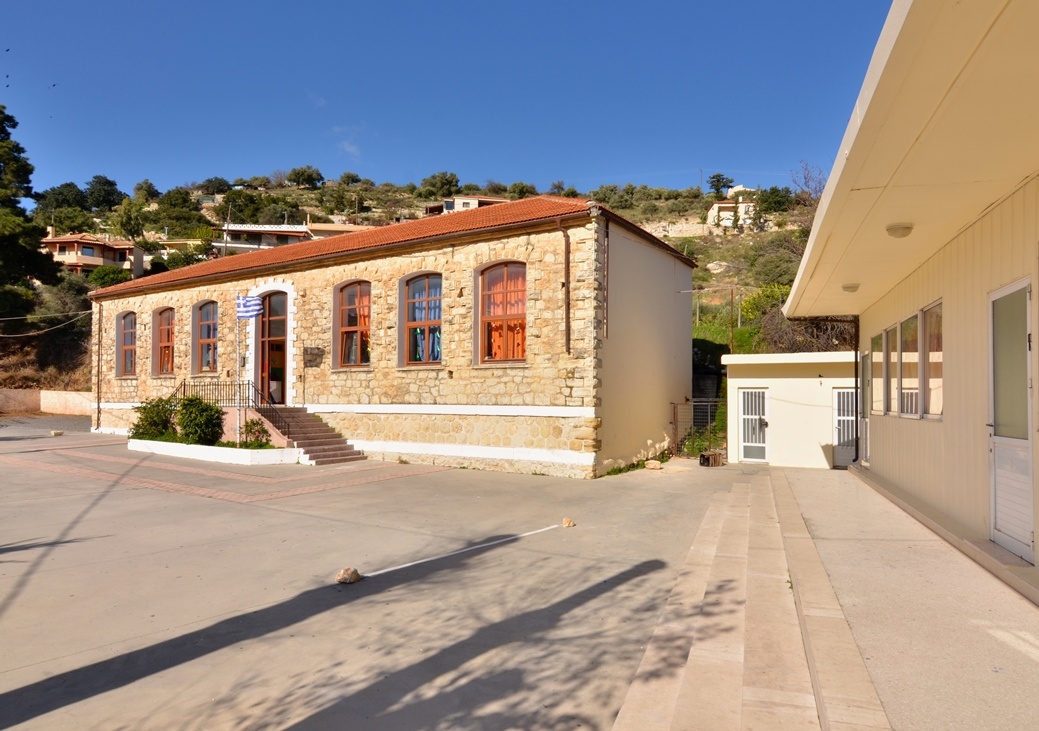
Houdetsi is a large village, renowned for its table grapes. It is built at the foot of Spiliotissa Gorge, to the southwest, a fact that justifies the rich vegetation and picturesque landscape created by the impressive rocks of the gorge cliffs.
Houdetsi has a long musical tradition, with renowned rhyme improvisers and noteworthy instrument makers. This musical tradition bears the stamp of musician Ross Daly who cooperated with the Municipality to create the ‘Labyrinth’ Musical Workshop, a lively hub of musical tradition and culture. ‘Labyrinth’ has made the village a reference point by organising events and seminars on modal musical instruments, attended by students from around the world. In the old mansion where ‘Labyrinth’ is housed there is an operating museum with more than 200 modal instruments of traditional music from Crete, the eastern Mediterranean, India, the Caucasus region, the Middle East and Central Asia, which represent the musical traditions of centuries, and await visitors to tell their story and acquaint them with their culture.
Houdetsi Festival is organised annually at the village jointly organised by ‘Labyrinth’ and the local community, presenting a wealth of musical events, fine art activities and traditional produce exhibitions.
Worth seeing
- The village fountain is of noteworthy archaeological interest. It dates back to 1671; it is named Hatzine, which means ‘water tank’ in Turkish. This fountain was the ‘heart’ of the village and there used to be basins and laundry washing spots around it, which were demolished in the 1980s.
- At Flambouriaris location18 a small, clay-head of goddess Athena wearing an Archaic (650-500 B.C.) helmet has been found. On the same spot there are ruins of the installations and pipes of an aqueduct from the Hellenistic era. In 1992 a vaulted tomb dating to the 13th century B.C. was discovered in the yard of the old Primary school.
- At the centre of the village there is a building owned by the heirs of Androulakis, which is considered to be a Venetian mansion; despite later intervention, the building maintains its morphological and stylistic features. On its east side a coat of arms has been preserved, while a second one is embedded in a later adjacent building, which probably belongs to the same property.
- The oldest church in Houdetsi is Agios Nikolaos (St. Nicholas), which was built before 1300, was then destroyed by the Ottomans and rebuilt in the 19th century. The murals decorating the church were covered with plaster. Parts of the decoration have been revealed. It is located at the entrance of the village, just before the old stone primary school, which was built in 1907 and it is a noteworthy special function building, significant in the history of the architecture of school buildings on Crete in the early 20th century. Other churches are Agia Paraskevi (St. Paraskevi), Agios Antonios (St. Anthony), Timios Stavros (Holy Cross), Agios Panteleimon (St. Panteleimon, Agios Paisios (St. Paisios), Michail Archangelos (Archangel Michael), Panagia Zoodochos Pigi (Madonna, the Life-giving Spring} .
- Walk along the lush green Spiliotissa Gorge to find, almost at the very end (near Agios Vasileios) the Panagia tis Spiliotissas (Madonna of the Cave) Sinai convent. (Visits can be arranged, Tel: 2810-741370)
- The village festivals are organised on September 25 and 26 (Ai-Giannis Festival) and 15 August on (Panagia Church).
Spiliotissa Gorge
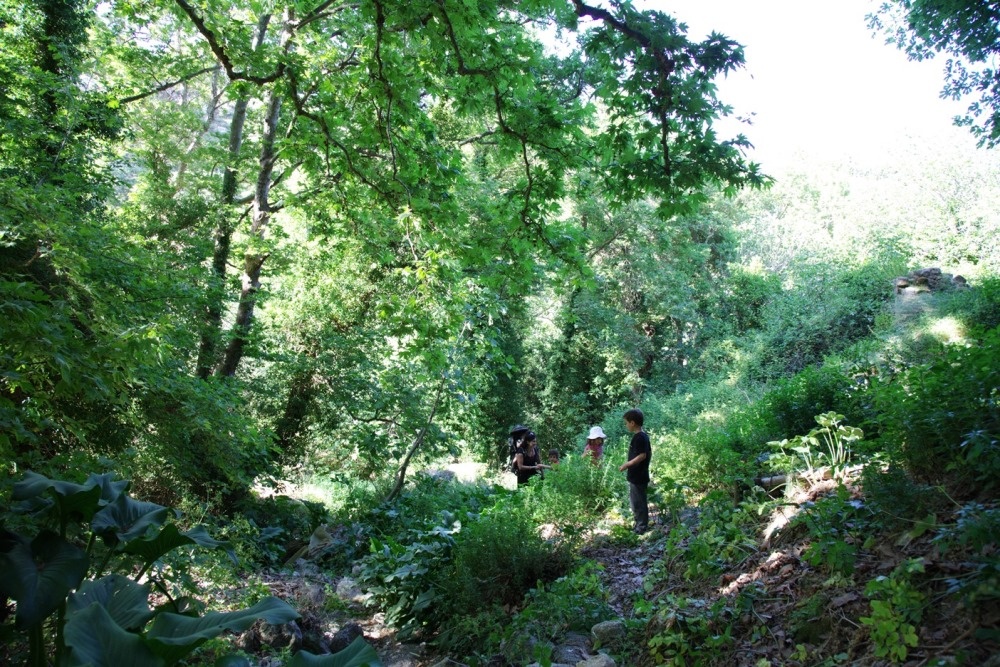
A small gorge, an oasis of green between Agios Vasilios and Houdetsi. At its Agios Vasilios entrance stands the Monastery of Spiliotissa.
Monastery of Spiliotisa
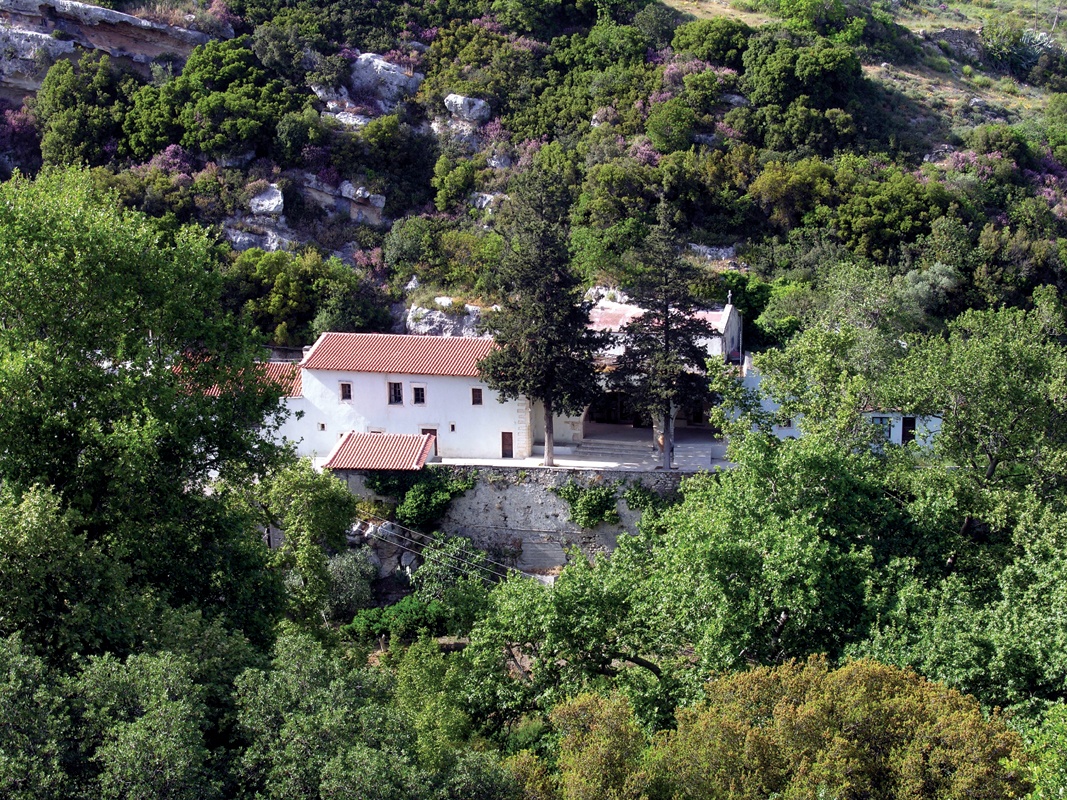
At the beginning of the Spiliotissa Gorge (on the side of Agios Vasileios) you will find the Sinai convent of Panagia Spiliotissa. The convent initially operated as a monastery and, today, it is one of the smallest active convents on Crete.
The chapel of the monastery is built on a rock, on which, according to tradition, an icon of the Virgin Mary was found. What remains of the murals on the rock in Panagia cave dates back to the 15th century. It seems that the monastery flourished at around 1600. It came under the jurisdiction of Sinai Monastery during the 1649-1669 period. The first primary school in the region was founded here. The school also served neighbouring hamlets in those years.
Tel: 2810 741370 (Visits to the convent can be arranged)
Agios Vasileios
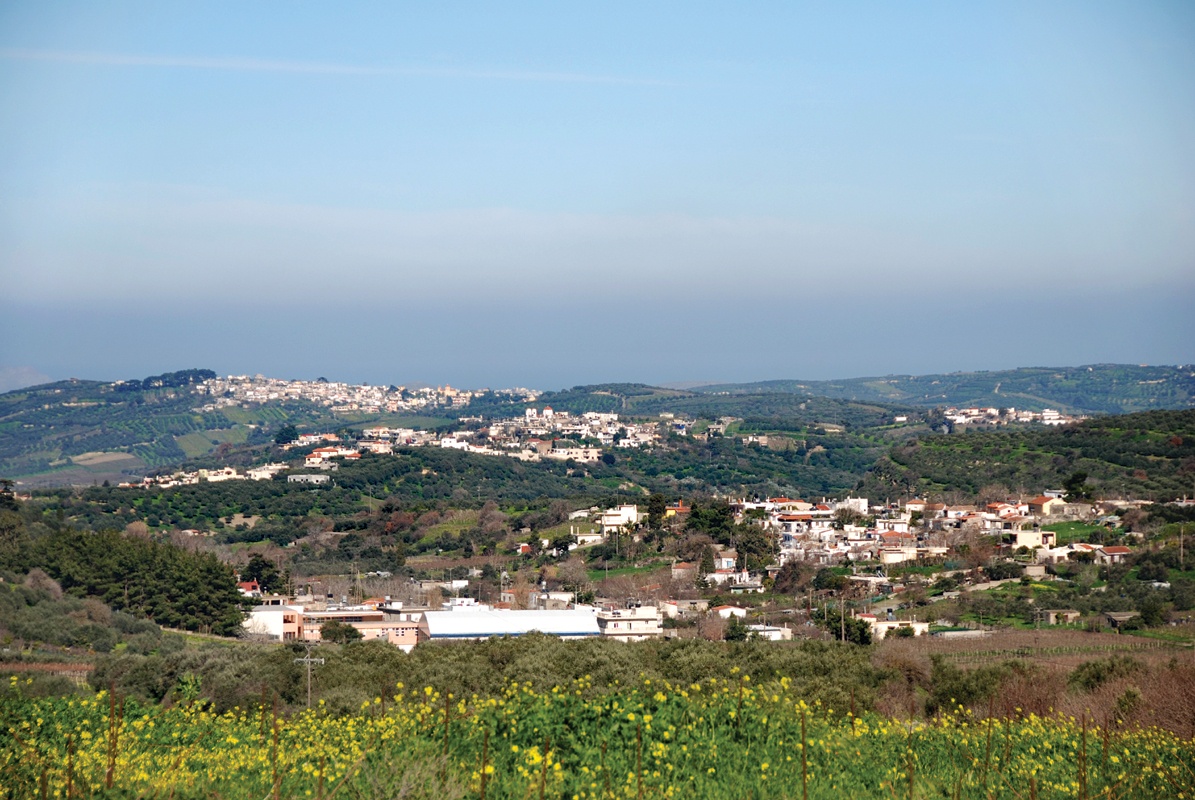
The hamlet of Agios Vasileios is built at the foot of Kefalas Hill at 360m and is one of the largest and most beautiful villages in the Municipality, positioned right at its centre. Its houses are built amphitheatrically affording a panoramic view of one of the most authentic Cretan landscapes of vineyards and olive trees.
The village of many churches
Old village locals say that a plague afflicted surrounding villages but never affected Agios Vasileios, because the surrounding churches protected it. Indeed, for religious tourists, Agios Vasileios is the destination, as here they will find many churches with a number of legends and stories accompanying them. At the centre of the village stands the church of Agios Vasileios (St. Vasileios), from which the village got its name. The church is decorated with murals that date back to the 15th century. There are also Agia Paraskevi (St. Paraskevi), Agia Kyriaki (St. Kyriaki), Agios Constantinos (St. Constantine), Agios Athanasios and Kyrillos (Saints Athanasios and Cyril). Noteworthy churches are those of Agios Antonios (St. Anthony) and Agia Pelagia (St. Pelagia), which have their own mural decorations, as well as the church of Agios Ioannis Prodromos (St. John the Baptist). The dedicatory inscription of the church of Agios Ioannis Prodromos displays the date 1291-1391.
At the beginning of the Spiliotissa Gorge (on the side of Agios Vasileios) you will find the Sinai convent of Panagia Spiliotissa. The chapel of the monastery is built on a rock, on which, according to tradition, an icon of the Virgin Mary was found. What remains of the murals on the rock in Panagia cave dates back to the 15th century. It seems that the monastery flourished at around 1600. It came under the jurisdiction of Sinai Monastery during the 1649-1669 period. Visits to the convent can be arranged (Tel: 2810 741370).
Apart from the churches, you can also admire the village itself, walking through its lanes and beautiful neighbourhoods, such as: Livadi, Plakoura, Kolonaki, Kara, Tourkogeitonia, Katrades and Geraki, as well as the fountains-reservoirs ‘Palaia Vrysi’, ‘Fountana’, Krini and the Spiliotissa watermills.


